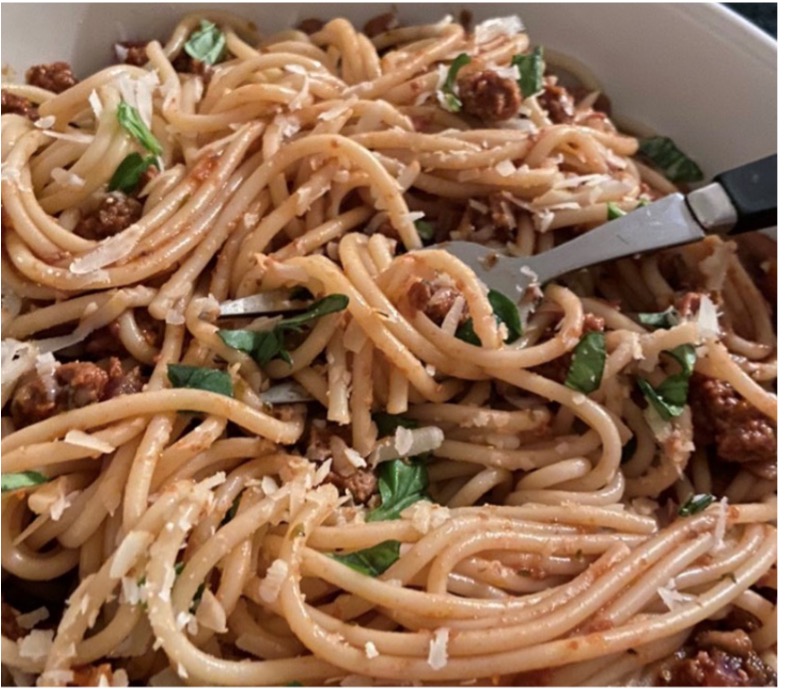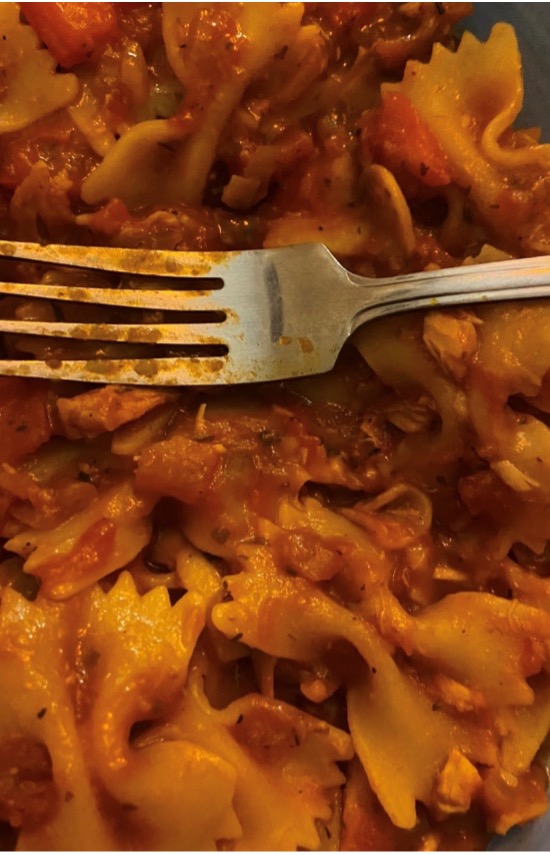A good pasta sauce is a go-to dish for many-a-host. They don’t take too much time or require much effort; if you can chop up some vegetables and find a jar of Dolmio, forty minutes later you have a pan full of Italian-style goodness.
While pasta is a great simple option for those in a rush – especially if you have a slow cooker to hand- what can you do to make it better? How can you impress your partner with a home-cooked Bolognese, or your parents with a sausage pasta when you come back from Uni for the holidays?
Tuck into these top tips and we’ll tell you, step by step, how to build a better pasta dish by changing a few simple things.

Recipe:
Sauce:
- Passata/ chopped tomatoes/ plum tomatoes
- Tomato Puree
- Italian herbs
- Stock cube
- Salt & pepper
- Red wine
Vegetables:
- Onion
- Garlic
- Carrot
- Mushrooms
- Red pepper
Meat (1 or more):
- Beef mince
- Chicken
- sausages
- Bacon
- Antipasti
- Pancetta
Toppings:
- Leaves (basil, rosemary, thyme, parsley, oregano)
- Parmesan
Sauce
By all means, stick to that Dolmio! But be aware that starting your sauce from scratch leaves a lot more room for creativity, ingenuity, and flavour.
The sauce is arguably the most important part of the dish; it absorbs the flavours of any meat you add, and has to work well with the pasta (we’ll get to both of these later).
There are a few different bases you can use for your sauce, but the classic is the standard red and ripe tomato. Personally, I tend to use passata- but my ¼ Italian boyfriend berates me to use a tin of chopped tomatoes instead. If he were more than ¼ Italian, perhaps I would indulge him more often.

Adding a few tablespoons of puree gives some sweetness and thickness to the sauce. If you’re feeling creative, you can find passata and puree which include a hint of garlic or a kick of chilli in the mix.
Italian herbs, a jar of which is just 70p in Tesco, are almost certainly a must. My mother taught me to put enough herbs in that when you stir the sauce, you can see the leaves all the way through it. Her tip has never failed me.
A good stock cube is a quick and easy way to add even more flavours to your concoction, plus the usual salt and pepper. Packs of 10 are as little as 60p in Tesco, and you can dissolve them in boiling water or chuck the little jelly stock straight in.
A staple of any true Italian pasta sauce is a good wine. A glass full enhances the sauce in unimaginable ways. If you aren’t familiar with wine, then don’t worry, because most bottles say on the label which kind of sauce or meat or food the wine is best paired with.
You should leave the sauce to simmer for around 40 minutes if you’re cooking it all on the hob, according to most instructions. But utilising a slow cooker allows for more of the flavours of the stock and the herbs to steadily, slowly and surely seep through- once everything else is added, of course!
Vegetables
Traditional Bolognese only features onion, garlic, carrot, and celery.
…Borderline shocking, I know. Especially when most Italian restaurant chains include mushrooms. If you want to impress your guests with your knowledge, give that recipe a go. But if you want to be a bit more experimental, go for the mushrooms. Recently, I’ve started adding a bit of red pepper too.
Just to reassure you fussy eaters out there (and like I told you before, Mum): neither carrot nor mushrooms quite taste the same when they’re mixed into a sauce. Carrot typically serves to enrich the meat, adding a little bit more sweetness and texture to the dish.

If you’re cooking a pasta dish entirely based on vegetables, Pasta Primavera (which literally means ‘served with mixed vegetables’) is a great place to start. Here’s a simple list of vegetables you might not have thought of for a pasta dish, that would make great additions to a meat sauce or hold up just as well on their own:
- Sweetcorn
- Broccoli
- Bell Pepper
- Yellow Squash
- Courgette
- Cauliflower
Meat
It’s time to think beyond the standard beef mincemeat. For once, I’m going to suggest some vegetarian options first because they can be just as flavoursome and, due to the absence of fat, can be healthier for you.
I’ve had great success with the frozen Quorn mince before; after adding plenty of stock and flavour to the sauce, I couldn’t have told you the difference between my meatless concoction and an M&S microwave spaghetti Bolognese.
Tesco’s own Plant Chef also has an excellent set of twelve vegetarian spicy meatballs, packed with herbs and flavour, for just £2.50. After following the cooking instructions, I left these in the sauce while it simmered, enriching the whole dish with their seasonings and spices.
Even with real meat, there are options other than just mince. Sausages are an understated commodity to pasta dishes, where you can chop one up into little pieces or squeeze the meat out of the skin.

Chicken is another great one; I’ve found that the shape of raw chicken is harder to manipulate, and to avoid the numerous health risks, I often choose to tear up pre-cooked chicken into little pieces and stir them in.
I’ve also used bacon before, which I’ve found works best with green pesto pastas, or in the creamy, eggy carbonara.
Aside from the main body of the meal, traditional Italian dishes often feature more than one kind of meat. Antipasti and pancetta are fantastic complimentary additions and one of the subtle changes that can take the flavour of your dish up by several notches.
Pasta
When in Rome, the Italians use fettuccine as their noodle shape. Classic spaghetti will still be excellent, of course, as you can’t go wrong. But presenting a new form of pasta to your guests adds a new layer of expertise to your dish. A couple of other popular spaghetti-like shapes include linguine and tagliatelle.

There’s certainly a science to pasta shapes, chosen especially to compliment the thickness of a sauce and meat/veg that fills it out. If you wanted to get experimental, here are some other shapes:
- Conchiglie (aka, shell)
- Farfalle (aka, bow)
- Fusilli (aka, twisty)
- Rigatoni
- Penne
- Ravioli
- Cannelloni
You could also experiment with the texture of the pasta by cooking it al dente, which means ‘to the tooth’; firm to bite. You do this by leaving the pasta slightly undercooked by a couple of minutes, which is best tested by simply tasting it.
Toppings
Of course, there’s the classic parmesan. Rather than getting a small pot of the stuff dry, I’d recommend you buy a block, get a small grater, and go crazy.
I spent the better part of a year and a half struggling to keep my basil plant alive. But my toil was worth it, because the satisfaction of plucking my own leaves and tearing them by hand is unmatched.
You can buy a small bag of leaves on their own, of course. And aside from basil, rosemary, thyme, oregano and parsley are other common leaves that serve as delicate accents to the visuals and flavours of the dish.
Chopped pine nuts are another option that isn’t always thought of. But a handful sprinkled across the top adds new texture and taste that would surely be well received.
Go nuts!